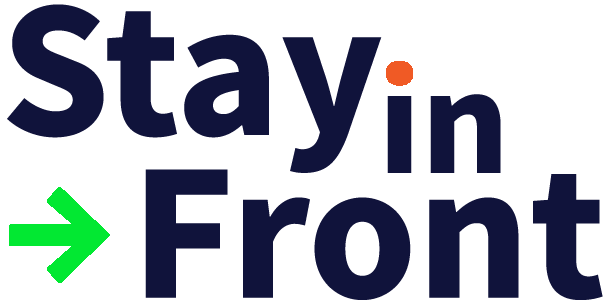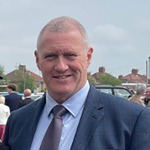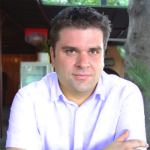
Dale Hagemeyer (2 of 2)
Partner
Promotion Optimization Institute
Dale Hagemeyer leads the research, best practices, and advisory function at POI and has been active on the POI Board since its inception. Previously, he was a research vice president and managing vice president at Gartner for 15 years. There, he did research in the application of technology to the business processes of trade promotion and field sales automation for consumer goods manufacturers. Prior to Gartner he spent 14 years in management positions related to the promotion and distribution of products at Sunbeam Corporation, The Quaker Oats Company, PepsiCo, Kraft Foods, and Kroger. He also fulfilled an international assignment in Mexico from 1995 to 1996. He has served on various industry advisory boards for trade associations and industry periodicals.

At our CAFE meeting, you moderated a panel discussion of global consumer goods executives on the topic of using data and technology to impact sales, profits and retail execution through measurable KPI’s. Was there anything that struck you as new and innovative?


What really stood out for me in the discussion is the call for more real-time data and ability to act on it. Being able to do so is very valuable. I have been saying this for several years but it has been more of a vision. The panelists calling for more ability to move quickly in the marketplace shows that practitioners and business leaders see the need to move away from the status quo, which will influence vendor road maps. This is great progress. I believe it will lead to more sales effectiveness.

At times, you’ve used the phrase, “share of stomach” rather than “winning at the shelf.” What’s the difference, and how do consumer goods companies go about winning?


The “share of stomach” remark is a throwback to my days in the food industry, specifically with Kraft Foods, PepsiCo and Quaker Oats. I spent a lot of time in the food business and always liked the term because it points to the fact that the food industry is a zero sum game. Someone is only going to eat so much oatmeal, or drink so much soda. They’ll eat until they’re full and then they’re done. So if they don’t eat mine, they don’t eat anybody’s.
In relation to “winning at the shelf,” if my product’s not on the shelf, then no one is going to eat my product. The term “share of stomach” is a little more graphic, but it’s really part and parcel of the same thing. If you win at the shelf, people take your product home and they consume it.
At the StayinFront CAFE meeting, the majority of those in attendance were food companies. Apparel companies don’t face the same limit as food companies. For instance, someone can buy 5000 pairs of shoes and the closet can expand, but stomachs can only expand so much.

What are some key challenges to having a global solution and how do you go about addressing them?


The short answer is “very carefully”.
At the end of the day, I believe that companies should consistently try to be as global as possible while also recognizing that there are limitations. That’s not to say it can’t be done, but it’s a little bit idealistic.
For example, the cost of a solution for a major market may not scale down to the 20 users you have in a very small country like Lichtenstein or Andorra, or perhaps a market like South Africa. Arguably, South Africa operates less like Africa and more like Europe or Australia in the sense of business process, but it’s a unique market so it doesn’t scale down. You have to consider that cost in one market may not work well in another.
You also have to realize that functionality may not work well in all markets. You may just have way too much functionality. For instance, a solution that’s oriented towards a very complex market like France may not be suitable across the international border where the markets vary. You might be trying to drive something very complex in a pretty simple market that doesn’t need that functionality.
There are other issues around devices. Certain markets, like North America, love Apple products. However, the same tool in other markets could be extremely problematic. There are some markets where you don’t take out your iPad in public because somebody could potentially kill you for it.
In addition to cost, functionality and local environments, there is business process. A fairly recent example is the “great firewall of China.” You can have this tool with great analytics and everything but, if you’re not a Chinese vendor, you’re going to be trying to push data through this firewall, which slows everything down. You have to find ways around that. The key is to find the right combination that meets all of those requirements. It can be done, but usually it ends up happening with 3 or maybe 4 solutions.
I follow many vendors in the market place. While many of them are very fine vendors, a lot of them don’t have the ability to execute globally. That’s not their scope. They’re only in Europe or they’re only in this or that market and true global execution is a huge stretch. They might tell you that they want to be in Africa or they want to be in Asia, but when you really nail them down, almost every vendor is opportunistic. They want to sell software in all markets, but if a big company says the only way to win their business is to set up an office in Brazil, or maybe one in Mexico or Argentina and hire people with technical and business process expertise, they get nervous about the amount of time, effort and investment required to really be in that market. This is part of what has kept them from being global.

Looking to the future what do you see as the industry trends?


There’s always the kind of “what’s hot and what’s interesting,” but if you think about a generations model or a maturity model, everything seems to start with just basic transactions. I call that “coverage.” We have to cover these markets. We have to have people. Maybe it’s for the sake of appearances or maybe it’s just to do a few things, but it’s very transactional in nature.
Then we start thinking about if a field force is a cost of doing business or a competitive weapon, moving from basic coverage to being more efficient. Whether or not it’s a strategic weapon, you want them to be efficient – to get more done. Finally there is effectiveness, which has to do with things like perfect store, look of success – that’s where you can have incremental sales and improved and improved KPIs. I think that’s a trend that everybody’s struggling with because it doesn’t work the same way in Indiana as it does in Indonesia. They are at different places on the curve, but everybody’s trying to move from being transactional, just the coverage piece, to being more efficient, to being more effective, and really nailing it. Effectiveness is the essence behind selling more. It answers questions such as “How does this capability or tool help me sell more? How can I have a greater impact? How can I enlighten somebody who’s being reluctant? How can I expedite information flow? How can I leverage the power of a team through things like social? How can I make sure I’m going to the right stores and doing the right things?”
Beyond effectiveness, I would say the future industry trends revolve around being able to be more predictive. It will be more about using advanced modeling to predict outcomes. It doesn’t mean you have 100% confidence, but it is a start.
The weather is a good example of predictive modeling. If you know that there is a 60% chance of rain tomorrow, you can make some pre-emptive decisions, such as whether to wear boots or take an umbrella. Regardless of whether you choose to take these actions at 30% or 60% or 90%, you’re equipped with the data to make decisions and to change outcomes. It’s all about probability. In terms of effectiveness, you will have to be predictive to focus on these outcomes and the outcomes are where you see a lot of value about probability.
In the past, everything has been coverage and efficiency – and reactive. It’s been manufacturers telling reps, “Go to these stores because they’re out of stock. Do it as quickly as possible. Get it taken care of.” Predictive is, “Go to these stores today, and do these things: A, B, C, in order to avoid a problem later,” You can call it pre-emptive, but I like predictive because it basically says I can influence an outcome as opposed to being reactive. And I think we’ll see more and more of this over time.
So I guess I would expand my definition of trends to three levels: Level 1 is coverage, Level 2 is driving efficiency and Level 3 is a sort of enlightenment where you can say, “Since my reps are out there, I want them to be more effective. I want them to do more.”
And then the last piece is using predictive analysis to optimize all of this because companies only have so many people. Knowing which stores they should go to and being more dynamic, allows them to influence the outcome.
Thank you Dale for taking the time to share your thoughts with us today.
As the CEO of StayinFront, Tom Buckley is the driving force behind the company’s vision and growth and has built a team of top-flight managers and strategic alliances with key industry partners. With a vision of leveraging technology to solve business problems, Tom founded StayinFront in 2000. He has grown the company into a leading global provider of SaaS-based mobile field solutions in the life sciences and consumer goods industries with successful deployments in over 50 countries across six continents.


Thomas Buckley
Chief Executive Officer
StayinFront
RECENT INTERVIEWS


Subscribe To News & Updates
Quick Contact








